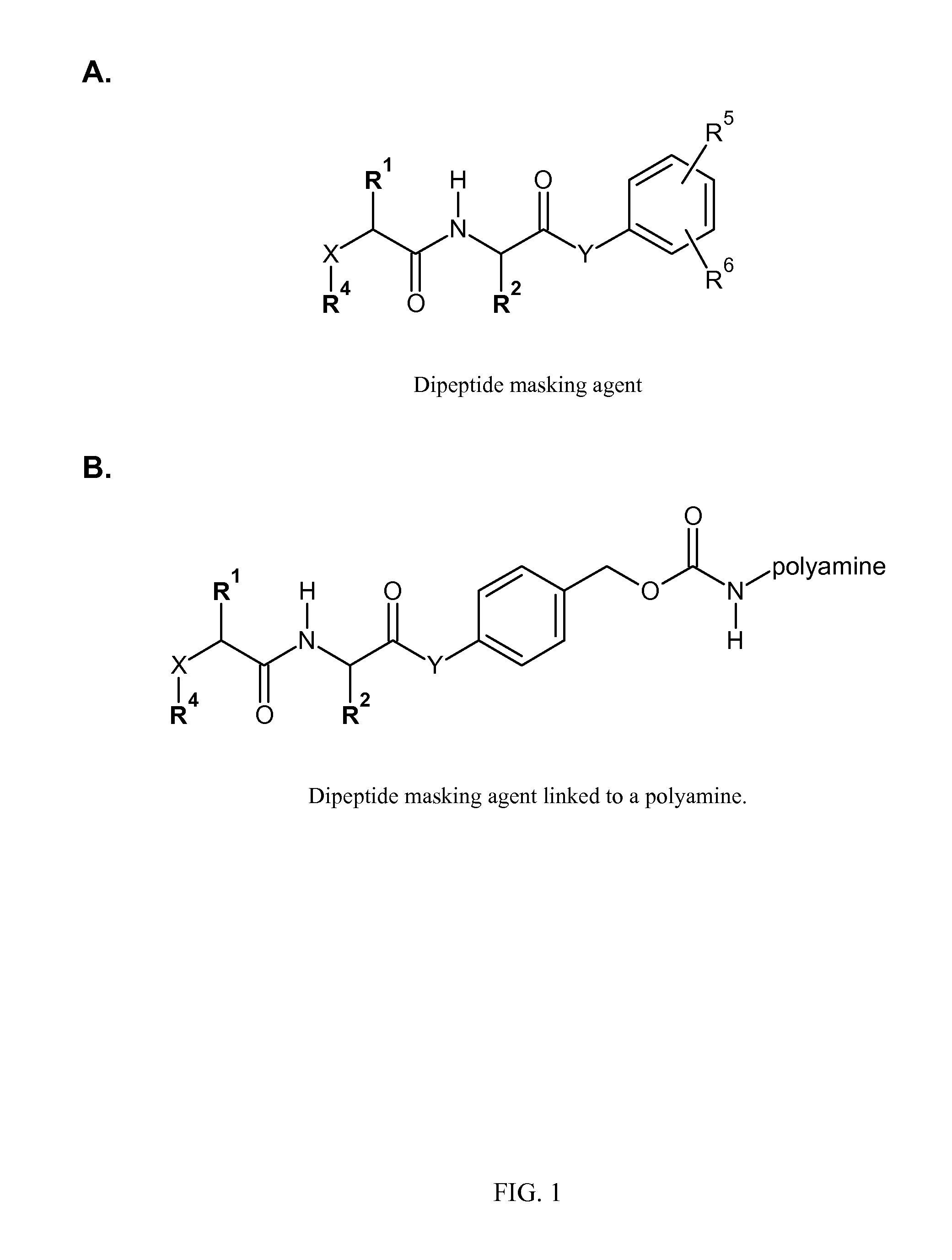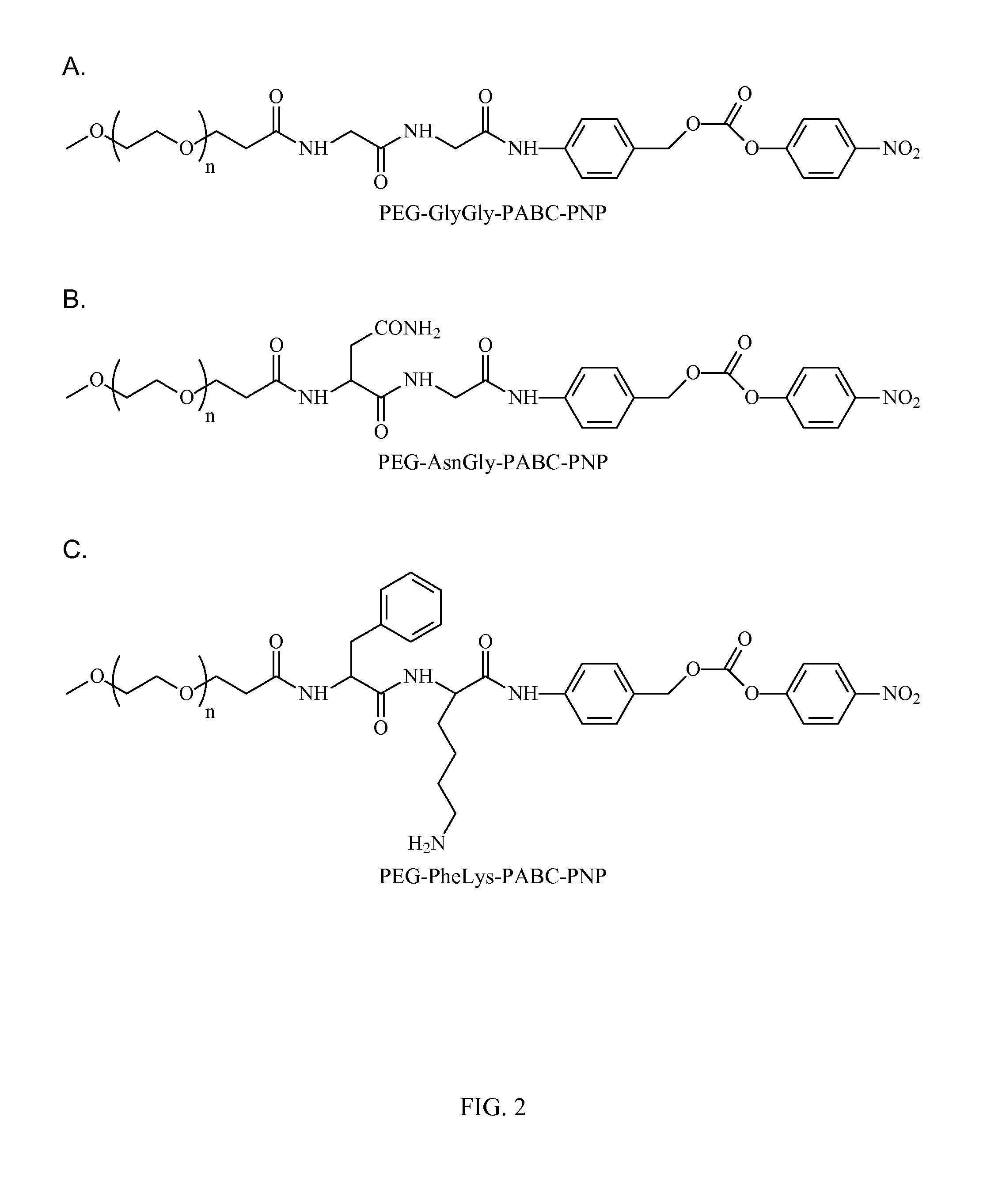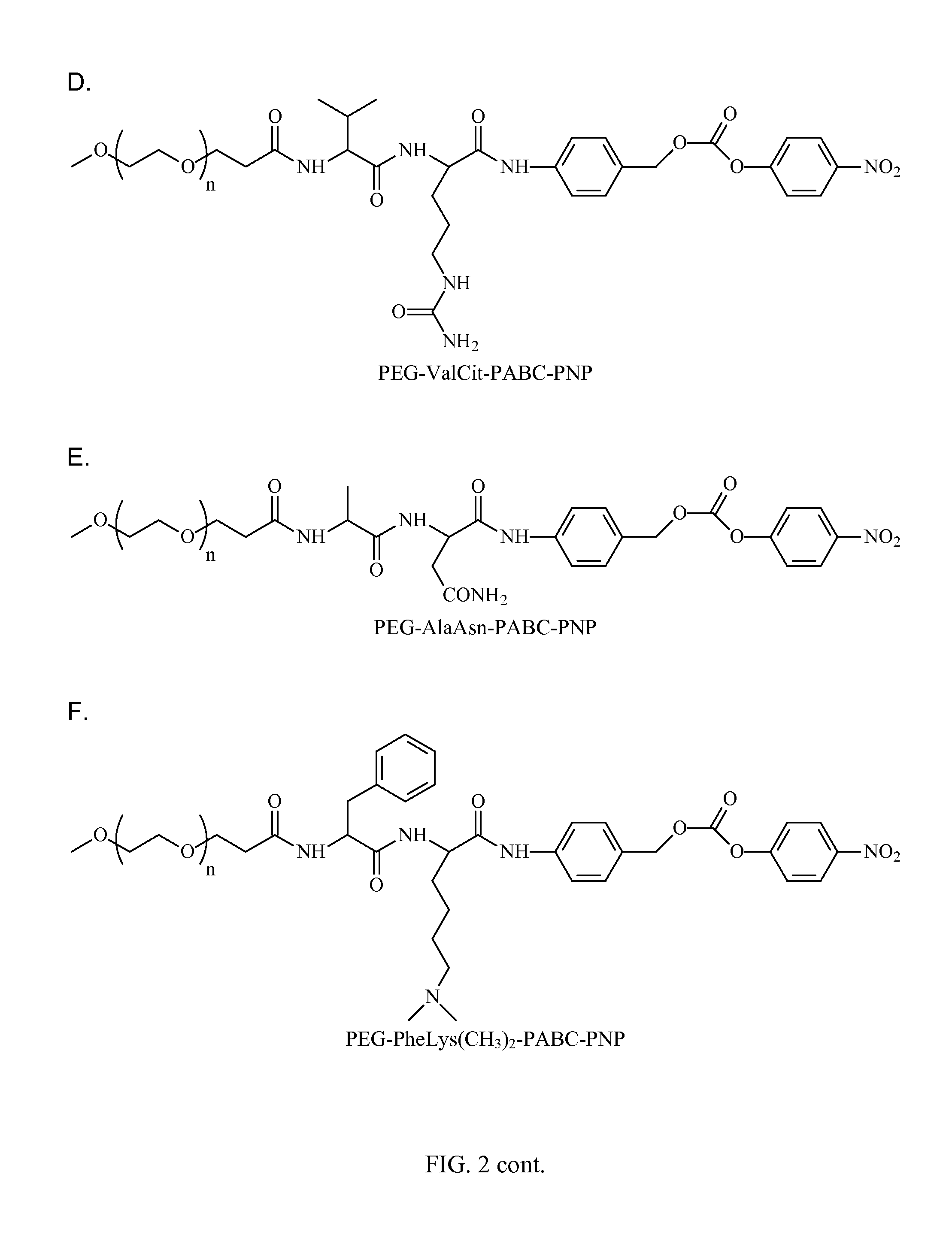Polyconjugates for Delivery of RNAi triggers to Tumor Cells In Vivo
a technology of rnai and polyconjugates, which is applied in the direction of peptides, organic chemistry, drug compositions, etc., can solve the problems of ineffective vivo delivery of polynucleotides using these same transfection reagents, large hydrophilic polymers used in antisense, rnai, gene therapies, etc., and achieves the effect of improving expression levels
- Summary
- Abstract
- Description
- Claims
- Application Information
AI Technical Summary
Benefits of technology
Problems solved by technology
Method used
Image
Examples
example 1
Synthesis of PEG Protease (Peptidase) Cleavable Masking Agents
[0156]All reactions, except coupling of amino acids in aqueous NaHCO3 and silyl-group deprotection, were carried out in anhydrous conditions using fresh anhydrous solvents. Column purification was done on a silica gel using specified eluents. Mass-spectra (MS) were taken using electrospray ionization.
[0157]In preparation of active p-nitrophenyl-p-acylamidobenzyl carbonate derivatives of PEG PEG-AA-PABC-PNP) we utilized NHS ester of PEG or to acylate amino terminus of dipeptido-p-acylaminobenzy alcohol precursor. In the following steps benzylic hydroxyl group was converted into p-nitrophenyl carbonate followed by removal of protective groups from amino acids. In some applications, when paranitrophenol (PNP)-carbonates were used for modification of certain polymers, protective groups were removed prior to polymer modification (see FIG. 5).
[0158]The synthesis starts from preparation of H-A1A2-PABA (Table 2) derivatives. Thes...
example 2
Synthesis or RGD Ligands
A. RGD-PEG-Thioate
[0228]1. RGD Mimic #1-PEG8-Thioate, MW 982.1.
[0229]2. RGD Mimic #2-PEG8-Thioate, MW 1022.2.
[0230]3. RGD Mimic #3-PEG8-Thioate, MW 1080.2.
[0231]4. RGD Mimic #3-PEG12-Thioate, MW 1212.4.
B. RGD-HyNic
[0232]1. RGD Mimic #1-PEG12-HyNic, MW 1272.
[0233]2. RGD Mimic #1a-HyNic, MW 802.8.
[0234]3. RGD Mimic #1b-HyNic, MW 830.9 (RGD).
C. RGE-PEG12-HyNic (control). MW 1282
[0235]
D. RGD Peptide-HyNic: RGD4C, [NH2-ACDCRGDCFCG-Lys(e-6-HyNic); SEQ ID 5], MW 1407.83
[0236]
example 3
Reversible Modification of Amphipathic Membrane Active Polyamines
[0237]Linkage of protease cleavable masking agents to amine-containing polymers—formation of p-acylamidobenzyl carbamate linkages.
A. RGD-PEG-Thioate
[0238]Cy3-labeled polymer was combined with SPDP-PEG24-FCit-para-nitrophenol at desired ratios in 100 mM HEPES pH 9.0 buffer for 1 h at RT. The SPDP-PEG24-FCit-modified polymer was then reacted with PEG12-FCit at a weight ratio of 1:8 (polymer:PEG12-FCit) in 100 mM HEPES, pH 9.0 buffer for 1 h at RT. The modified polymer was then purified using a sephadex G-50 spin column.
[0239]RGD-PEG-Thioate mimic was deacetylated with hydroxylamine at a molar ratio of 1:5 (RGD-PEG-Thioate mimic:hydroxylamine) in PBS pH 7.4 at RT for 2 h.
[0240]Modified polymer was combined with deacetylated RGD-PEG-Thioate mimic at a weight ratio of 1:1 (polymer:RGD) in PBS pH 7.4 at RT for a minimum of 4 h to form the polymer RGD conjugate. The polymer-RGD conjugate was purified using a sephadex G-50 spi...
PUM
| Property | Measurement | Unit |
|---|---|---|
| diameter | aaaaa | aaaaa |
| diameter | aaaaa | aaaaa |
| hydrophobic | aaaaa | aaaaa |
Abstract
Description
Claims
Application Information
 Login to View More
Login to View More - R&D
- Intellectual Property
- Life Sciences
- Materials
- Tech Scout
- Unparalleled Data Quality
- Higher Quality Content
- 60% Fewer Hallucinations
Browse by: Latest US Patents, China's latest patents, Technical Efficacy Thesaurus, Application Domain, Technology Topic, Popular Technical Reports.
© 2025 PatSnap. All rights reserved.Legal|Privacy policy|Modern Slavery Act Transparency Statement|Sitemap|About US| Contact US: help@patsnap.com



